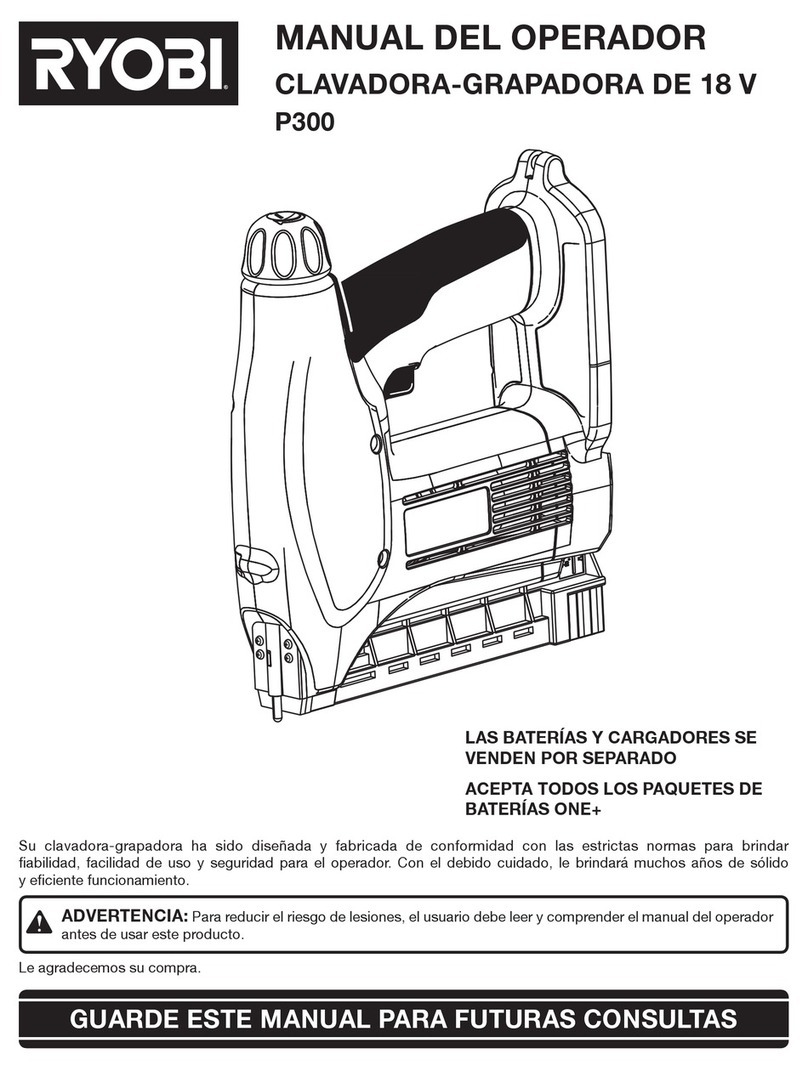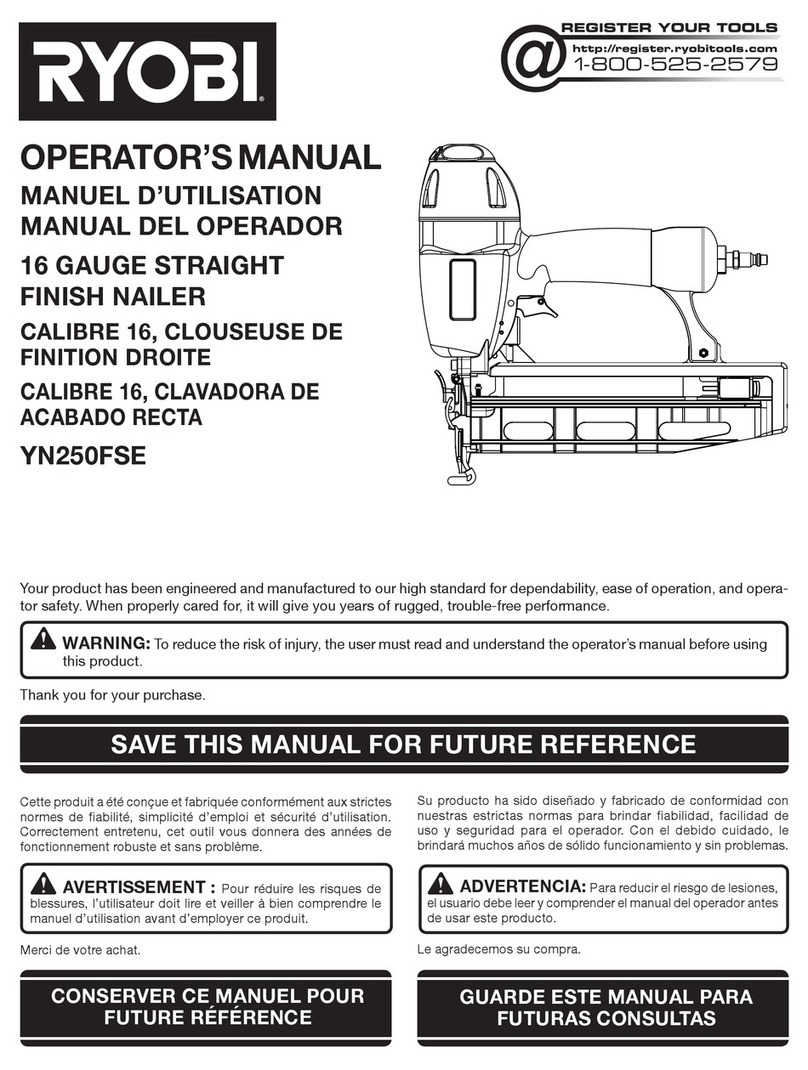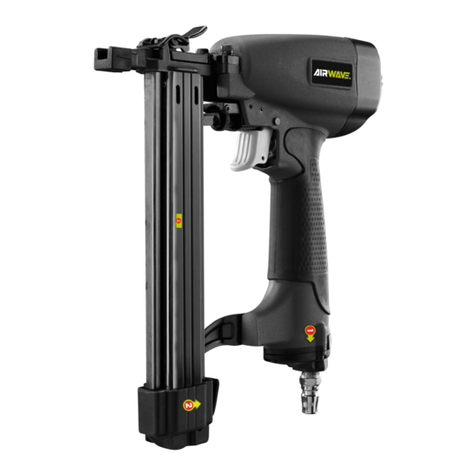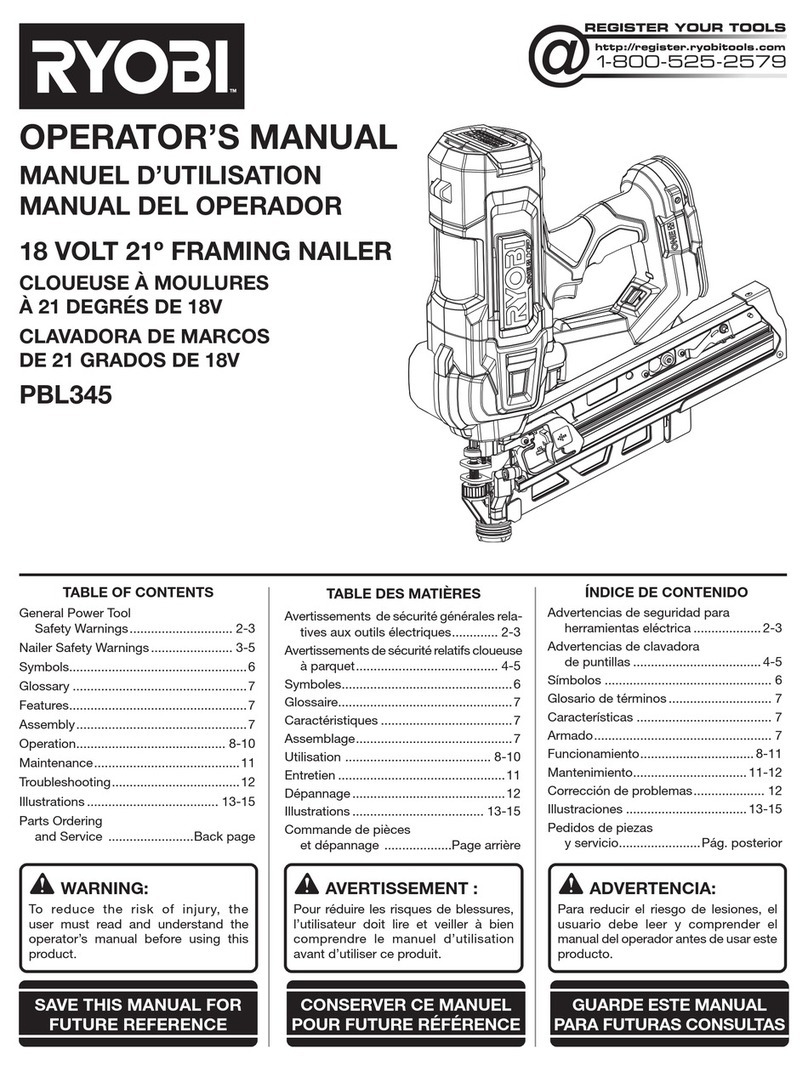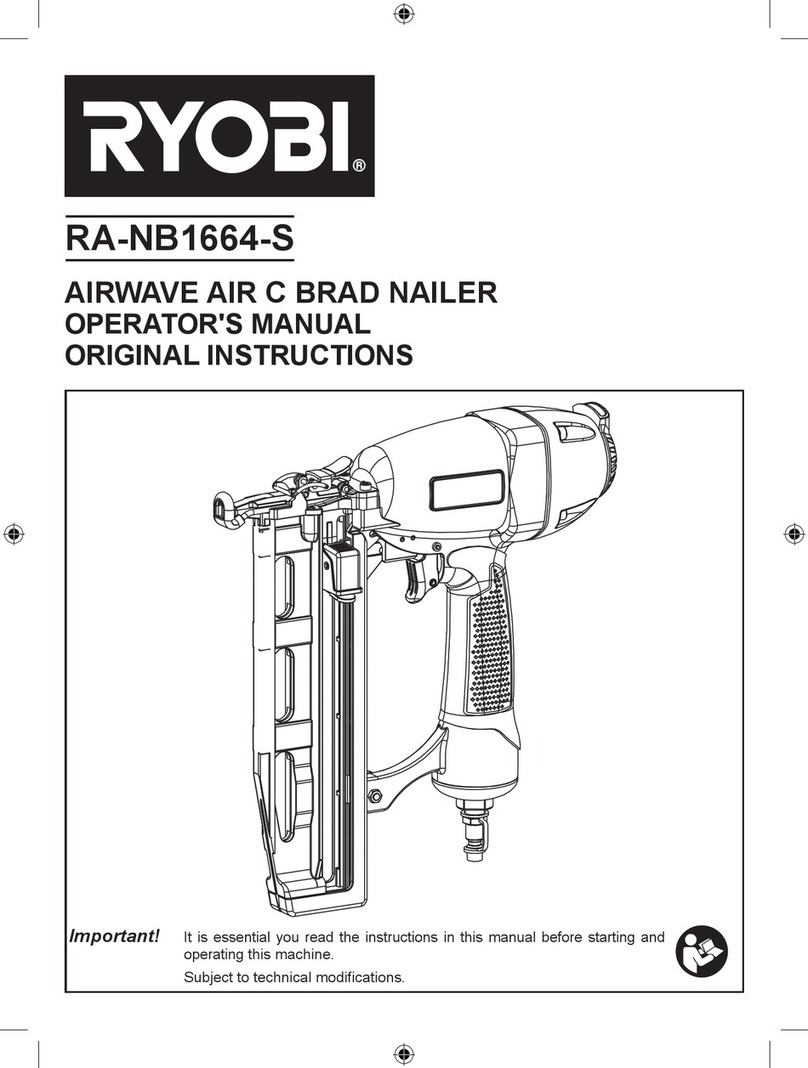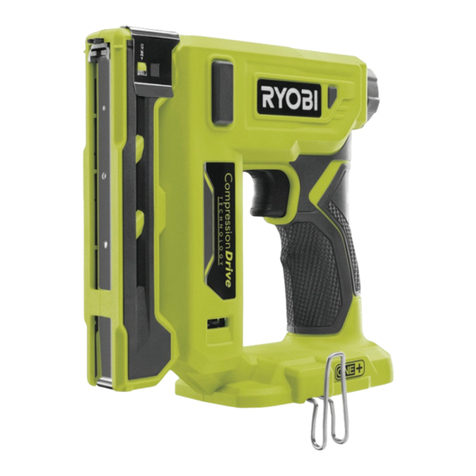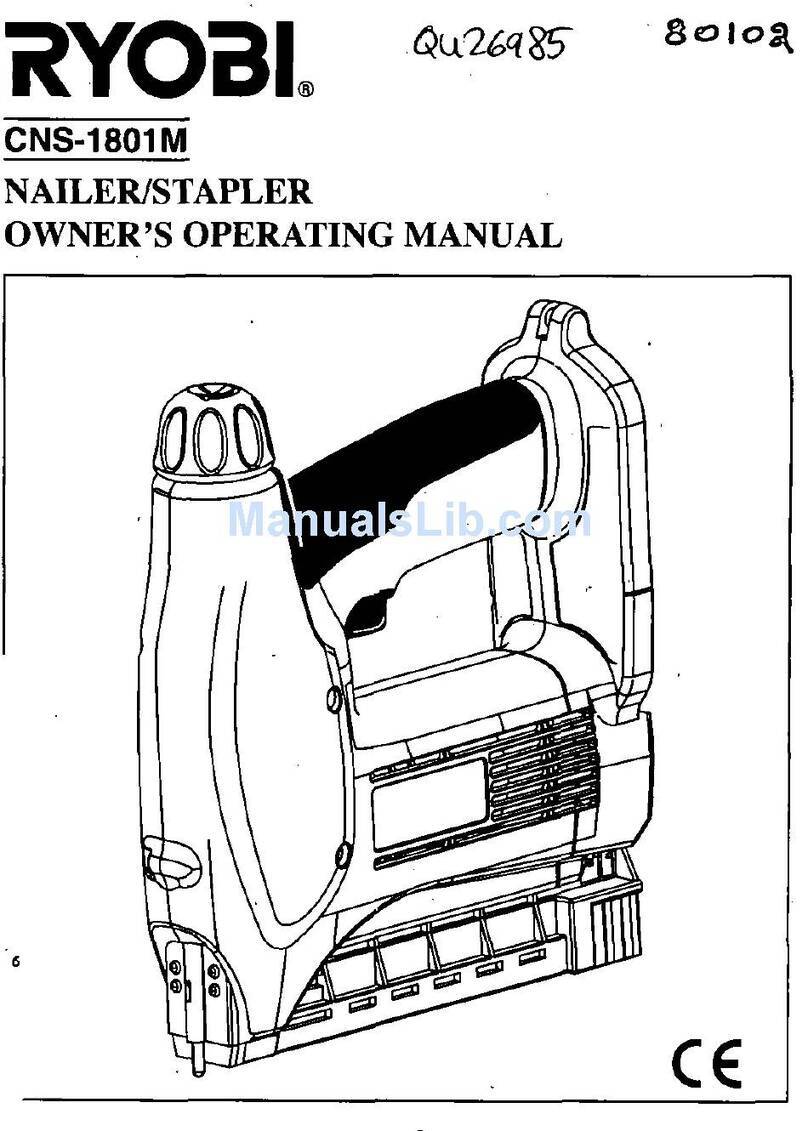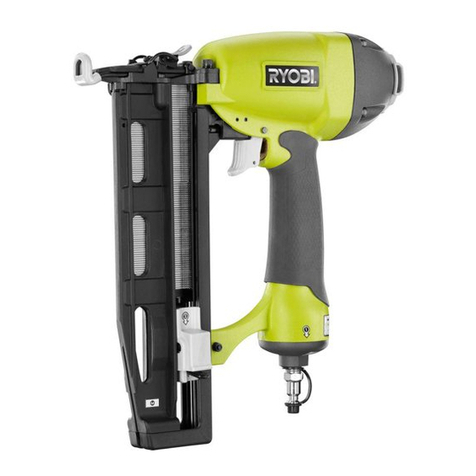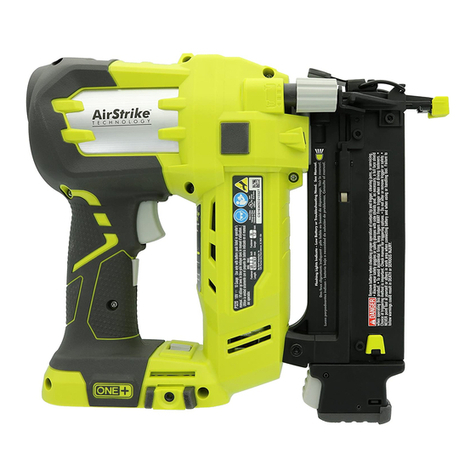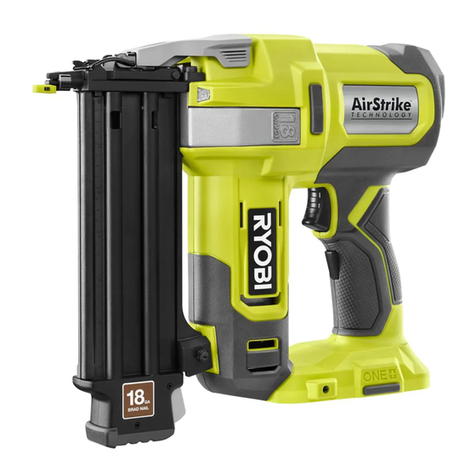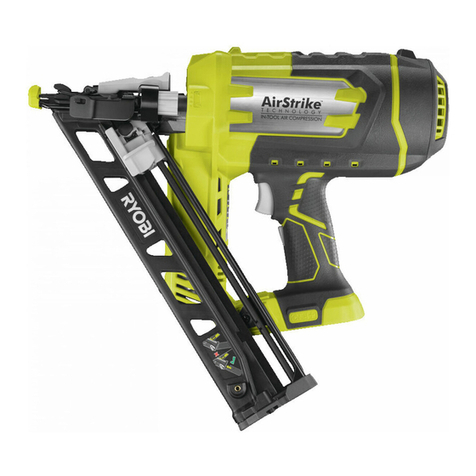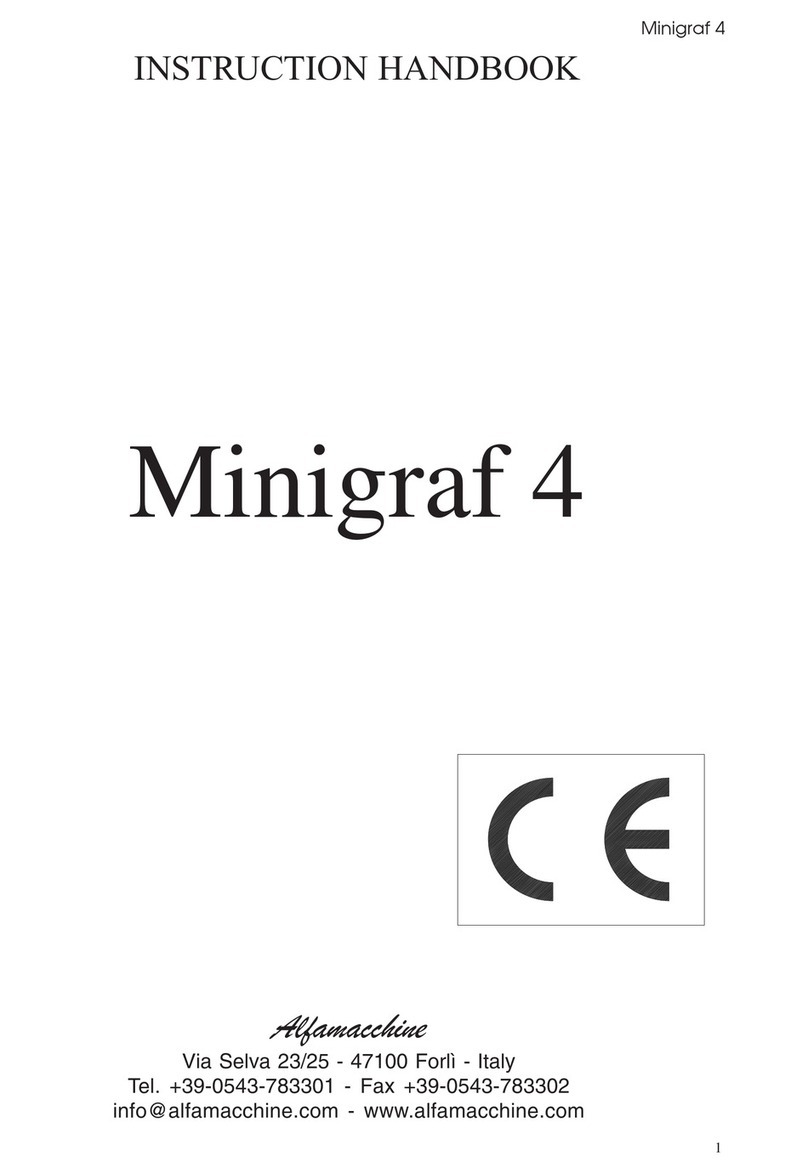2
English
■ Connect the tool to the air hose.
■ Press the trigger to operate the wrench.
■ DO NOT use any additional force upon the tool.
■ DO NOT allow tool to free run for an extended period
of time as this will shorten its life.
■ There is the risk of mismatching the diameter of the
shaft of mounted point and that of the collet.
■ There is a risk of excessive vibration levels due to
improper mounting or damaged insert tool.
■ There is a risk of running on of the inserted tool after
the start and stop device has been released.
■ Only permitted insert tools of the correct shaft diameter
are used.
■ Cutting-off wheels and routing cutter wheels shall not
be used.
■ Release the start and stop device in the case of an
interruption of the energy supply.
■ Disconnect tools from the energy source before
changing accessories or making adjustments.
■ Required air pressure of 90psi, and an air flow
according to specification.
■ For inserting the grinder head to the tool, insert the
grinder head to collet nut.
■ Tighten the collet nut for securing grinder head by the
provided wrench.
■ Before operation, ensure the inserted tool is fixed in
tool.
WARNING
Ensure the air supply is clean and does not exceed
90psi while operating the tool. Too high an air pressure
and unclean air will shorten the product life due to
excessive wear and may be dangerous, causing
damage and/or personal injury.
LUBRICATION
An automatic in-line lter-regulator-lubricator is
recommended (Fig. 6) as it increases tool life and keeps
the tool in sustained operation. The in-line lubricator
should be regularly checked and lled with air tool oil.
Proper adjustment of the in-line lubricator is performed by
placing a sheet of paper next to the exhaust ports and
holding the throttle open approximately 30 seconds. The
lubricator is properly set when a light stain of oil collects
on the paper. Excessive amounts of oil should be avoided.
If it becomes necessary to store the tool for an extended
period of time (overnight, weekend, etc.), it should receive
a generous amount of lubrication at that time. The tool
should be run for approximately 30 seconds to ensure oil
has been evenly distributed throughout the tool. The tool
should be stored in a clean and dry environment.
● It is most important that the tool be properly
lubricated by keeping the air line lubricator filled
and correctly adjusted. Without proper lubrication
the tool will not work properly and parts will wear
prematurely.
● Use correct lubricant in the air line lubricator. The
lubricator should be of low air flow or changing air
flow type, and should be kept filled to the correct
level. Use only recommended lubricants, specially
made for pneumatic applications. Substitutes may
harm the rubber compounds in the tools O-rings
and other rubber parts.
IMPORTANT!
If a lter/regulator/lubricator is not installed on the air
system, air operated tools should be lubricated at least
once a day or after 2 hours work with 2 to 6 drops of oil,
depending on the work environment, directly through
the male tting in the tool housing.
LOADING AND OPERATION
WARNING
Ensure the air supply is clean and does not exceed
90psi while operating the tool. Too high an air pressure
and unclean air will shorten the product life due to
excessive wear, and may be dangerous causing
damage or personal injury.
■ Clean air inlet filter weekly.
■ Line pressure should be increased to compensate
for unusually long air hoses (over 8 metres). The
minimum hose diameter should be 6.35 mm (1/4”) I.D.
and fittings must have the same inside dimensions.
■ Keep hose away from heat, oil and sharp edges. Check
hose for wear, and make certain that all connections
are secure.
■ Use the tool only for its intended purpose.
MAINTENANCE
■ Keep the tool safe by regular maintenance.
■ Always keep your air tool clean and lubricated. Daily
lubrication is essential to avoid internal corrosion and
possible failure.
■ Maintenance shall be taken weekly.
■ Drain the air tank daily. Water in the air line will
damage the wrench.
■ If the tool cannot be used anymore, make sure to





